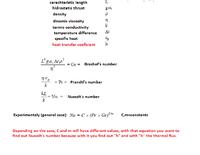David_
Advanced Member level 2
Hello.
I wonder if sound-waves which is variations in pressure in our atmosphere could in any way(theoretically or in reality) affect the rate at heat would be transferred from a object into the surrounding air?
We frequently use heat sinks in electronics and when the heatsink itself isn't enough we ether increase the size of the heatsink or apply airflow with a fan(or through the design of an enclosure), and it sound to me that if we would adjust the pressure of the air surrounding the heatsink that might affect the heat transfer?
I wish I had one of those really fancy thermal cameras, some day perhaps.
Regards
I wonder if sound-waves which is variations in pressure in our atmosphere could in any way(theoretically or in reality) affect the rate at heat would be transferred from a object into the surrounding air?
We frequently use heat sinks in electronics and when the heatsink itself isn't enough we ether increase the size of the heatsink or apply airflow with a fan(or through the design of an enclosure), and it sound to me that if we would adjust the pressure of the air surrounding the heatsink that might affect the heat transfer?
I wish I had one of those really fancy thermal cameras, some day perhaps.
Regards
